PROGRAM SCHEDULE 2005-2006
19th Season
| Sun | Sep | 18 | 2:00 | Ian Bostridge:
A Personal Perspective
Some time ago (1998, if memory serves) I was fortunate to come across a recording by a young British tenor who was completely unknown to me. As a long-time admirer or German lieder, I was anticipating yet another dry, academic reading of Schumann. Instead, I was completely captivated with the singer's expression of youth and vulnerability through his fresh approach. Each song was presented in a way that seemed intensely personal, communicating to me directly. Since then I have been an avid fan of Ian Bostridge and have snapped up as many of his recordings as I can. Each new disc demonstrated to me the highest level of artistic expression as well as versatility in many song styles from early music to the 20th century.

On October 2, I will finally have the opportunity to hear Ian Bostridge in person in an all-Schubert recital at Roy Thomson Hall. In preparation for this recital, I will be presenting a selection from several of Bostridge's German lieder recordings as well as a rare chance to see excerpts from recitals captured on DVD. I also understand that some members of the Club have actually heard Ian Bostridge in person. How envious I am! Perhaps we can persuade these members to share their recollections of their experiences.
(js/js&ta)
|
| Sun | Oct | 9 | 2:00 | War & Music: Part 2
Olivier Messiaen: Quartet for the end of Time
And I saw another mighty angel come down from heaven clothed with a cloud: and a rainbow was upon his head,  and his face was as it were the sun, and his feet as pillars of fire. […] And he set his right foot upon the sea, and his left foot upon the earth. […] And the angel which I saw standing upon the sea and upon the earth lifted his hand to heaven and swear by him that liveth for ever and ever. […] that there should be time no longer: but in the days of the voice of the seventh angel, when he shall begin to sound, the mystery of God should be finished. and his face was as it were the sun, and his feet as pillars of fire. […] And he set his right foot upon the sea, and his left foot upon the earth. […] And the angel which I saw standing upon the sea and upon the earth lifted his hand to heaven and swear by him that liveth for ever and ever. […] that there should be time no longer: but in the days of the voice of the seventh angel, when he shall begin to sound, the mystery of God should be finished.
Revelation of St John the Divine 10:1-7.
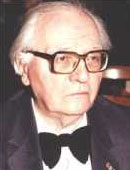 Inspired by this quotation from the Book of Revelation, the Quartet for the end of Time was composed by Messiaen while he was a prisoner of war at Stalag VIIIA, Gorlitz, Poland. It was first performed there on January 15, 1941 before an audience of between about four and five thousand people. Inspired by this quotation from the Book of Revelation, the Quartet for the end of Time was composed by Messiaen while he was a prisoner of war at Stalag VIIIA, Gorlitz, Poland. It was first performed there on January 15, 1941 before an audience of between about four and five thousand people.  Messiaen himself described its musical language as "essentially immaterial, spiritual, and Catholic". The quartet attempts to describe a world that would come into being once time ended. A devout Catholic would look forward to the end of time and the coming of the Kingdom of God, but Messiaen also allows his terror of the unknown to find expression in the music of this intriguing and fascinating work. The title of the work fascinated me for many years before I actually had the opportunity to hear it. I feel it is a work I will return to again and again over my lifetime … every listening opening up newer and newer realms of consciousness. Messiaen himself described its musical language as "essentially immaterial, spiritual, and Catholic". The quartet attempts to describe a world that would come into being once time ended. A devout Catholic would look forward to the end of time and the coming of the Kingdom of God, but Messiaen also allows his terror of the unknown to find expression in the music of this intriguing and fascinating work. The title of the work fascinated me for many years before I actually had the opportunity to hear it. I feel it is a work I will return to again and again over my lifetime … every listening opening up newer and newer realms of consciousness.
(dpa/ta&js)
|
| Sun | Oct | 23 | 2:00 | Clara Schumann (1819-1896) &
Fanny Mendelssohn (1805-1847)
Fanny Mendelssohn-Hensel and Clara Wieck-Schumann were near
contemporaries. Their backgrounds and destinies were very different, but
they both shared the challenges of building careers as composers in the
19th century, an age in which creative artistic careers were still
largely an exclusive male preserve.

Fanny Mendelssohn-Hensel (1805-1847), Felix Mendelssohn's sister, was
born in an affluent upper middle-class family. She was every bit as
talented as her younger brother (which he acknowledged), but it was made
clear to her by her family that her talents should be used only in order
to better prepare her for the traditional feminine "career", as wife and
mother. Only after the death of her father, and a couple of years spent
in Italy, did she start to publish music under her own name and to make
a name for herself as an independent artist. Alas, her fledgling career
was cut short by her untimely death. In spite of her short life she left
an impressive body of work, which encompasses not only chamber works and
lieder, but also large scale works.

Clara Wieck-Schumann (1819-1896), Robert Schumann's wife, was born into
a musical family, and from early on she was groomed by her father to be
a concert pianist - which, for that time and age, was somewhat unusual.
Even more unusual was the fact that she defied her father in marrying
his student Robert Schumann, and then managed to pursue a successful
piano vistuoso career while raising a family. In spite of her major
creative talent, and long life, her compositional output is relatively
limited in both quantity and scope, due both to the indifference of the
male musical establishment, and to the fact that the demands her concert
career and family made on her time and energy prevented her from
dedicating more resources to composition.
In this programme I'll endeavour to show not only these two women
composers' accomplished mastery of the art of composition, equal to that
of their male contemporaries, but I'll endeavour to convince that their
work is every bit as profound and emotionally compelling as that of the
men in whose shadow they lived.

(jn/jn)
[Discography]
|
| Sun | Nov | 13 | 2:00 | Thomas Dausgaard conducts Don Quixote
Please note that the program takes place at a new location - see flyer or e-mail for details
For me, one of the most delightful surprises of the recent Toronto concert scene has been Thomas Dausgaard. With no baton, from his bare hands and fingers, Dausgaard spins out the silken threads of joyful, spontaneous music making from the Toronto Symphony Orchestra.
He does so well in Sibelius and Nielsen, but the magic happens not only in his native Scandinavian repertoire. The core classics like Beethoven, Schumann, and Brahms sound so extraordinary with him. He gives life and immediacy to dignified masterpieces which are made to drop their solemn masks and soar into the air. I would like to introduce some of the CD recordings of works by Beethoven, Grieg, and Zemlinsky conducted by Dausgaard.
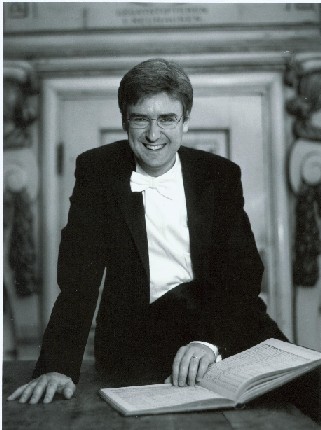
In his third visit to Toronto, Maestro Dausgaard will cleverly create an occasion which highlights our orchestra's recent precious acquisitions. In Richard Strauss' massive tone poem Don Quixote appear the new principal players Winona Zelenka (cello) and Teng Li (viola). These two talented young ladies were both appointed as principal string players only a year ago. They have already shown themselves to be hardworking yet stunning performers. In Don Quixote Winona and Teng will portray the old knight and his servant. I wish they could play these male roles of Spanish literature in tuxedos. I am sure both of them would look so fabulous!
To prepare for this challenging piece CMC will watch the DVD recording of Don Quixote conducted by von Karajan with Antonio Meneses (cello), Wolfram Christ (viola), and the Berlin Philharmonic Orchestra.
(ta/rn&pl)
Thomas Dausgaard’s appearances in Nov.-Dec. 2005 in Toronto
Toronto Symphony Orchestra concerts
Wed. Nov. 30 at 8:00 pm
Thu. Dec. 1 at 8:00 pm
Sat. Dec. 3 at 8:00 pm
Thomas Dausgaard, conductor
Stephen Hough, piano
Winona Zelenka, cello
Teng Li, viola
R. Strauss: Don Quixote
Brahms: Piano Concerto No. 2
Tickets: $115, $88, $82, $72, $63, $48, $40, $34 or telephone 416.593.4828
Wed. Dec. 7 at 8:00 pm
Thu. Dec. 8 at 8:00 pm
Thomas Dausgaard, conductor
Leonidas Kavakos, violin
Sibelius: Violin Concerto
Bruckner: Symphony No. 2 (Nowak, 1877)
Tickets: $115, $88, $82, $72, $63, $48, $40, $34 or telephone 416.593.4828
|
| Sun | Nov | 27 | 2:00 | Potpourri
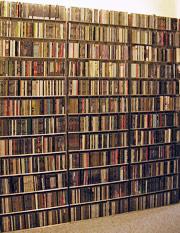 From time to time during the year, the Classical Music Club hosts a program where club members are invited to bring along one of their own recordings that they would like to share. It could be a recent purchase, a treasured recording, or something rare. These programs encourage members who are not comfortable designing an entire program of their own to be able to participate actively in the club. To give everyone a chance, please limit the playing time of your choice to about 10 minutes at most. The person hosting today can play CDs and DVDs. Beyond that, the recording choice is up to you.
From time to time during the year, the Classical Music Club hosts a program where club members are invited to bring along one of their own recordings that they would like to share. It could be a recent purchase, a treasured recording, or something rare. These programs encourage members who are not comfortable designing an entire program of their own to be able to participate actively in the club. To give everyone a chance, please limit the playing time of your choice to about 10 minutes at most. The person hosting today can play CDs and DVDs. Beyond that, the recording choice is up to you.
(*/bs)
|
| Fri | Dec | 9 | 6:30 | Christmas Party

Each year, the Classical Music Club Toronto holds a Christmas party for members and their guests. We hold the party to a FRIDAY night because Saturdays in December tend to be fully booked for many of the Classical Music Club Toronto members. Details including location will be sent to members via e-mail or by flyer. The kitchen will open at 6:30, and the party proper will begin around 7 p.m.
()
|
| Sun | Jan | 15 | 2:00 | Mozart's Quintets:
A 250th Anniversary Birthday Celebration
And you thought quintets are for strings only! Not only did Mozart write six string quintets but he also composed quintets for various solo wind instruments and strings.  To celebrate the 250th birthday anniversary of this giant of classical music, I have worked diligently to prepare for you a truly fascinating examination of Mozart's quintets, played by some of the world's most coveted chamber music groups. What an eye opener it was for me as I auditioned each recording (courtesy of other club members). The interpretations are varied and the recording qualities are far from uniform. I guarantee YOU too will hear the differences. Despite the different approaches, it is ultimately the music that will transport you to the Vienna of the 18th century by this prolific composer who died very young. And what wonderful music!
To celebrate the 250th birthday anniversary of this giant of classical music, I have worked diligently to prepare for you a truly fascinating examination of Mozart's quintets, played by some of the world's most coveted chamber music groups. What an eye opener it was for me as I auditioned each recording (courtesy of other club members). The interpretations are varied and the recording qualities are far from uniform. I guarantee YOU too will hear the differences. Despite the different approaches, it is ultimately the music that will transport you to the Vienna of the 18th century by this prolific composer who died very young. And what wonderful music!
The program will include a cursory examination of my favourite, String Quintet No. 1 in B-flat major, K174. There will be recordings from groups that have not appeared on the Canadian music scene as well as those that we are familiar with. If you have a recording of this piece, listen to it before the session on January 15th and come hear how it compares with what I will present. I will reveal my favourite recording at the session. Selections from other quintets will also be part of the program.
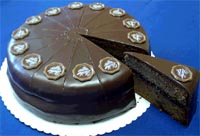
Finally, Sacher torte will, regrettably, not be included in the celebration. But chocolate definitely WILL!
(py/py)
|
| Sun | Jan | 29 | 7:00 | American Music at Mid-Century: the Tonal Modernists
NOTE THE UNUSUAL TIME!

American serious music began to acquire a distinctive voice in the middle decades of the last century. Some of its individual voices are well known; the names of Barber and Copland come quickly to mind. Others who were well known at the time are less often - one may say seldom - heard today; Paul Creston, David Diamond, and Howard Hanson fall into that category. These three composers are sometimes described as "tonal modernists" or "neo-romantics" because they composed within that tradition throughout their careers. In fact, one of the pieces we'll listen to in this program is known as the "Romantic" symphony. They eschewed experiments with atonalism and serialism that, for a time, dominated the world of serious music in both Europe and America, and drew the contempt of the avant garde. Pierre Boulez once said that "Any musician who has not experienced the necessity of twelve-tone language is useless, his whole work is irrelevant." In contrast, Diamond spoke out against what he called "creativity chaos" and in favour of "romantically inspired music … tempered by reinvigorated classical technical formulas."

Hanson, Creston, and Diamond are rarely regarded as composers of the very first rank. Nonetheless, they created many extremely fine works in a variety of forms: orchestral, chamber, choral and operatic. In this program, the emphasis will be on their orchestral works. For context, we will listen to an early American romantic work and look at examples of more recent works that draw on the "folk tradition" which Dvorák hailed as the most promising source for a uniquely American music. Then, we will give ourselves over to the glories of the "tonal modernists" and savour the many delights to be found in some of their finest works. Those glories and delights include music graced by vigor without bombast, high spirits without frivolity, and deep feeling without sentimentality.
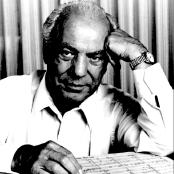
For those tempted by the charms of aesthetic theory, the music of the tonal modernists may raise a question recently posed by the critic, Terry Teachout, in the pages of Commentary magazine. "To what extent, if any," he asked, "should the quality of a work of art be judged by its originality?" The works of Hanson, Creston, and Diamond provide one provocative answer to this question.
(jg/ta&js)
|
| Sat | Feb | 18 | 7:00 | Shostakovich, Sym. No. 8
Please note the day and the time, they were changed to accommodate the presenter's schedule

The Symphony No. 8 in C minor (Opus 65) by Dmitri Shostakovich was written in the summer of 1943, and first performed on 4th November that year by the Leningrad Philharmonic Orchestra under Yevgeny Mravinsky, to whom the work is dedicated.
The symphony is in the tradition of C minor “tragedy to triumph” symphonies begun with Beethoven's Fifth and including Bruckner's Eighth and Mahler's Second. Shostakovich's friend Isaak Glikman called the symphony “his most tragic work”.
View Wikipedia entry
(jg/ta&js)
|
| Sun | Mar | 5 | 2:00 | Bring your own recording (BYOR)
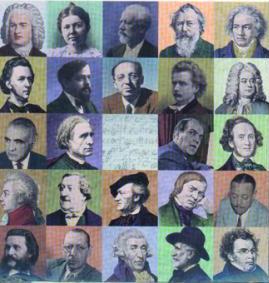 From time to time during the year, the Classical Music Club hosts a program where club members are invited to bring along one of their own recordings that they would like to share. It could be a recent purchase, a treasured recording, or something unusual. To give everyone a chance, please limit the playing time of your choice to about 10 minutes at most. The person hosting today can play CDs and DVDs. Come out and enjoy a potpourri of music and good company. From time to time during the year, the Classical Music Club hosts a program where club members are invited to bring along one of their own recordings that they would like to share. It could be a recent purchase, a treasured recording, or something unusual. To give everyone a chance, please limit the playing time of your choice to about 10 minutes at most. The person hosting today can play CDs and DVDs. Come out and enjoy a potpourri of music and good company.
(bs/bs)
|
| Sun | Mar | 19 | 2:00 | Mahler: Song of the Earth
 In Gustav Mahler's Sixth Symphony (1903) there are three tremendous hammer strokes which he referred to as the “blows of fate”. Ironically, four years later Mahler himself underwent three life-changing experiences which fulfilled the prophecies hidden in this symphony. Firstly, Mahler resigned from his position as Music Director of the Vienna Court Opera. Secondly, Maria, the eldest of his two daughters, died of scarlet fever and diphtheria, aged just over 4. Finally, Mahler himself was diagnosed with a serious and progressive heart condition which, although requiring him to cut back on his usual physically strenuous activities, nevertheless eventually shortened his life. He wrote to conductor Bruno Walter, “With one blow, I have simply lost everything I ever achieved in clarity and comfort. I stood face to face with nothingness and now at life’s end I must again learn to stand and walk, like a beginner.”
In Gustav Mahler's Sixth Symphony (1903) there are three tremendous hammer strokes which he referred to as the “blows of fate”. Ironically, four years later Mahler himself underwent three life-changing experiences which fulfilled the prophecies hidden in this symphony. Firstly, Mahler resigned from his position as Music Director of the Vienna Court Opera. Secondly, Maria, the eldest of his two daughters, died of scarlet fever and diphtheria, aged just over 4. Finally, Mahler himself was diagnosed with a serious and progressive heart condition which, although requiring him to cut back on his usual physically strenuous activities, nevertheless eventually shortened his life. He wrote to conductor Bruno Walter, “With one blow, I have simply lost everything I ever achieved in clarity and comfort. I stood face to face with nothingness and now at life’s end I must again learn to stand and walk, like a beginner.”
In the melancholy nostalgia of The Chinese Flute by Hans Bethge, paraphrases in German of Chinese poems from as far back at the eighth century, 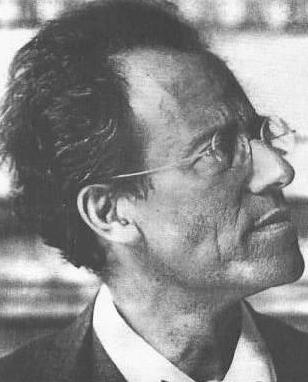 Mahler may have found an echo of his personal feelings. Although there is little written evidence of the emotional turmoil that he must have endured during this time, it is clear that when Mahler turned to these poems for inspiration, the result was a unique, autobiographical outpouring. In a 1908 letter to Bruno Walter he wrote: “I think it [Das Lied] is the most personal thing I have done so far.” My view is that through this amazing song cycle he came to an acceptance of his own mortality. Along this journey to acceptance, Mahler also was able to re-visit the sonic landscape of his entire artistic output to that point. Mahler may have found an echo of his personal feelings. Although there is little written evidence of the emotional turmoil that he must have endured during this time, it is clear that when Mahler turned to these poems for inspiration, the result was a unique, autobiographical outpouring. In a 1908 letter to Bruno Walter he wrote: “I think it [Das Lied] is the most personal thing I have done so far.” My view is that through this amazing song cycle he came to an acceptance of his own mortality. Along this journey to acceptance, Mahler also was able to re-visit the sonic landscape of his entire artistic output to that point.
Because there are so many outstanding recordings, I had a challenge putting together a program that would do justice to the work while still giving Club members the opportunity to hear some of the greatest interpreters. We will have the chance to share excerpts from a number of recordings, including a chamber version (arranged by Arnold Schoenberg) and a piano version by Mahler himself.
(js/ta&js)
|
| Sun | Apr | 23 | 2:00 | Francis Poulenc (1899-1963)
 “My model is instinct; I’m without principle, and proud of it; I have no tricks, thank God; Inspiration is a mysterious thing better left unexplained.” Thus Francis Poulenc (1899-1963), composer of a vast number of musical works in every genre, from the giddily profane to the profoundly religious, proclaimed his musical creed. Although in his later life a fervent Catholic, he was always a staunch homosexual, and a rather promiscuous one at that, favouring the charms of men of the “working-class” over those of the more effete elite. More to the point for us, perhaps, is that every aspect of his nature is splendidly revealed in his music. “Vive l’Esprit Français!”
“My model is instinct; I’m without principle, and proud of it; I have no tricks, thank God; Inspiration is a mysterious thing better left unexplained.” Thus Francis Poulenc (1899-1963), composer of a vast number of musical works in every genre, from the giddily profane to the profoundly religious, proclaimed his musical creed. Although in his later life a fervent Catholic, he was always a staunch homosexual, and a rather promiscuous one at that, favouring the charms of men of the “working-class” over those of the more effete elite. More to the point for us, perhaps, is that every aspect of his nature is splendidly revealed in his music. “Vive l’Esprit Français!”
(dh/ta&js)
|
| Sun | May | 28 | 2:00 | Fugue
If counterpoint is like a great mountain range of musical art, then fugue is its summit. Technically, a fugue is a type of music written for several independent musical voices. A fugue begins with its subject (a brief musical theme) stated by one of the voices playing alone. A second voice then enters and plays the subject, while the first voice continues on with a contrapuntal accompaniment. Then the remaining voices similarly enter one by one. The remainder of the fugue further develops the material using all of the voices. In the excerpt below, you can visually observe each of four voices in a four-voice Bach fugue, entering one after another:

So what's the big deal? Hopefully, our survey of fugue will help us to better understand what the attraction of fugue is (it's not just about intellect!), how to listen to a fugue (it’s not just about the themes!), why it has survived hundreds of years, and why it continues to be a mode of expression for some of our most profound ideas.
PART 1: The first part of the program focuses on the fugues of Johann Sebastian Bach, whose work is the definitive statement of fugal art. While later composers availed themselves of greater forces (orchestras) and drama (Romanticism) characteristic of later times to articulate their fugues, none surpassed Bach's quantity or quality. Bach composed fugues for every occasion, of every persuasion &emdash; happy, sad, humorous, ponderous, religious, diminutive, grand. We will listen to Bach fugues for piano, for harpsichord, for organ, for voice, for chamber orchestra, and even modern adaptations for string quartet and scat singers. We will hear selections from the Well-Tempered Clavier and The Art of Fugue, and get to the bottom of what makes fugues fugal, including identifying fugal devices like stretto, augmentation, inversion, and so forth.
PART 2: After the break, we will hear what later composers had to say about fugue. We will witness how, after a period of “fugue backlash” in the later 18th century, Classical era composers like Mozart and Beethoven returned to fugue in their mature works or for their “deeper thoughts”. During the Romantic period, fugue was used for great dramatic effect, by Wagner, Bruckner, Richard Strauss and others. In the Modern era, fugue went through something of a renaissance, as composers went “back to Bach” for new inspiration (Stravinsky, Barber), or paid homage (Shostakovich), or extended counterpoint to new musical territory (Bartok, Bernstein). Surely there is something innately beautiful and meaningful about a form that has said so much through so many centuries and different musical styles.
(rb/ta&js)
|
A summer of piano music

|
| Sat | Jun | 10 | 7:00 | Bring Your Own Spanish Piano Music
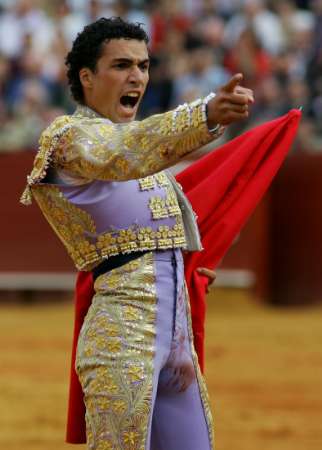
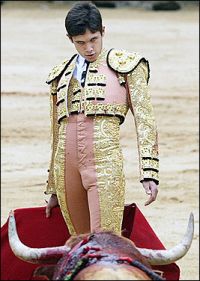 The Spanish were active explorers of the world and established colonies
around the globe. Spanish piano music from Spain, South and Central America, Mexico and the Phillipines is all welcome. In a 'bring your own' programme, members are invited to bring along a selection of music of not more than about 10 minutes duration. The Spanish were active explorers of the world and established colonies
around the globe. Spanish piano music from Spain, South and Central America, Mexico and the Phillipines is all welcome. In a 'bring your own' programme, members are invited to bring along a selection of music of not more than about 10 minutes duration.
(/js&ta)
|
| Sun | Jun | 25 | All day | Pride Day CMC Booth
|
| | | |
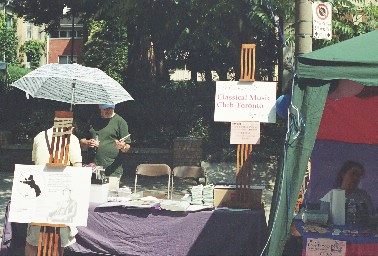
Drop by our club´s booth on Pride Day, June 25, 2006
We´re located with the community organisations, on Wellesley St.
Club members will be there to answer your questions
And we will have some previously enjoyed CDs for sale.
Pride Toronto Official Web site
|
| Sat | Jul | 15 | 7:00 | Chopin
With the dawning of the Romantic Era we see a dramatic change in music. Beethoven’s forays into uncharted musical territory ushered in a period in which composers were forced to explore new ways to make their works sound unique and different. Themes that drew on folklore as well as folk music became one of the ways that composers could use to stand out from the crowd. One of the seminal figures associated with this expression of national heritage was Frederic Chopin. 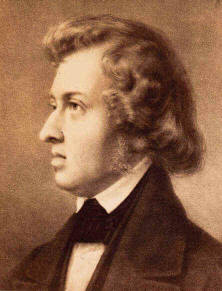 Chopin’s Polish roots provided a wealth of musical forms in which his genius could flourish. Chopin’s contributions to keyboard literature cannot be overestimated providing both lyrical beauty as well as dazzling showpieces. The July 15th program will examine the aforementioned characteristics as well as some of the more interesting aspects of the composer’s life and times. The program will provide a wide range of selections from the composer’s catalogue from his delightful simpler pieces to the demanding works of his maturity performed by the piano greats of 20th century. Whether you are a veteran of Chopin’s works seeking to reacquaint yourself with his masterpieces or someone looking to explore new musical territory CMC’s Chopin program should satisfy your musical palette. Looking forward to seeing you on July 15th. Chopin’s Polish roots provided a wealth of musical forms in which his genius could flourish. Chopin’s contributions to keyboard literature cannot be overestimated providing both lyrical beauty as well as dazzling showpieces. The July 15th program will examine the aforementioned characteristics as well as some of the more interesting aspects of the composer’s life and times. The program will provide a wide range of selections from the composer’s catalogue from his delightful simpler pieces to the demanding works of his maturity performed by the piano greats of 20th century. Whether you are a veteran of Chopin’s works seeking to reacquaint yourself with his masterpieces or someone looking to explore new musical territory CMC’s Chopin program should satisfy your musical palette. Looking forward to seeing you on July 15th.
(jw/bs)
|
| Sat | Aug | 5 | 7:00 | Mozart Piano Concerti - Towards a Bird's-Eye View of Twenty-seven Gems
(DVD presentation)
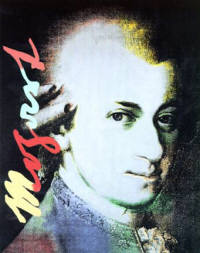 Whenever I have encountered Mozart's piano concerti I have been enjoying them with freshly surprising discoveries. Being enchanted by those gems, my emotional attachment to them grew ever stronger. So I have come to seriously believe that I would love to spend the tail end of my life listening to Mozart's piano concerti every day. Or I will bring recordings of them with me to a desert island. Someday I wish I could have a bird's-eye view of the entire twenty-seven pieces... However, these treasures are so stunning, and there are, after all twenty-seven of them; it has been quite scary. The 250th anniversary of Mozart's death in 2006 gives me a good motivation and courage to get on with the project. Here is what I have come to grips with so far. Whenever I have encountered Mozart's piano concerti I have been enjoying them with freshly surprising discoveries. Being enchanted by those gems, my emotional attachment to them grew ever stronger. So I have come to seriously believe that I would love to spend the tail end of my life listening to Mozart's piano concerti every day. Or I will bring recordings of them with me to a desert island. Someday I wish I could have a bird's-eye view of the entire twenty-seven pieces... However, these treasures are so stunning, and there are, after all twenty-seven of them; it has been quite scary. The 250th anniversary of Mozart's death in 2006 gives me a good motivation and courage to get on with the project. Here is what I have come to grips with so far.
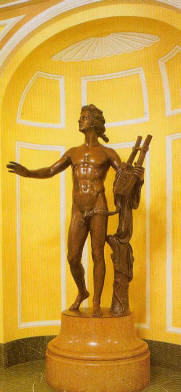 Out of twenty-seven concerti, No. 7 is for three pianos, and No. 10 is for two pianos. Out of twenty-seven concerti, No. 7 is for three pianos, and No. 10 is for two pianos.- The first four concerti are arrangements rather than independent compositions. Mozart used popular themes from somebody else's works.
- Most of the concerti were composed for Mozart himself as soloist or for professional players, but there are exceptions which were written for amateurs:
No. 7, No. 8
- There are only seven concerti with movements written in minor keys:
No. 4, No. 14, No. 18, No. 20, No. 22, No. 23, and No. 24
- There are three concerti which have a part for two clarinets in the orchestra:
No. 22, No. 23, and No. 24.
Two oboes are usually replaced by two clarinets, but exceptionally No. 24 has both oboes and clarinets.
I have managed to gather visual materials of Friedrich Gulda, Zoltán Kocsis, Murray Perahia, Maria João Pires, Mitsuko Uchida, etc. Their excellent performances seem to be enlarging Mozart's universe to even greater dimensions than before. I am looking forward to sharing the challenge with you in tackling these important works of enormous vision, yet simple artistry.
(ta/ta&js)
|
| Sat | Aug | 19 | 7:00 | Shostakovich: 24 Preludes
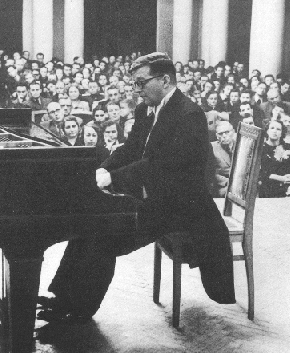
Dmitri Shostakovich, a fine pianist, is not remembered primarily for his solo piano compositions, but for his larger chamber and symphonic works. However, in his 24 Preludes, ranging in length from only 35 sec. to 2 min., 12 sec., can be found the seeds for many of his larger, more ambitious creations. Following Chopin's tonal plan (major key, then its relative minor), the home key is acknowledged only at the beginning and end of each piece, while in between we are plunged into an astonishing world of brilliant harmonic and rhythmic invention. So irresistible are these little gems that someone had to arrange a handful of them for the Virtuosi of Moscow, and these we will also enjoy. Finally, to hear how those early seeds sprouted and grew, we'll hear two of Shostakovich's magnificent string quartets (Nos. 3 and 7) in the St. Lawrence String Quartet’s stunning new recording.
(dh/js&ta)
|
|

